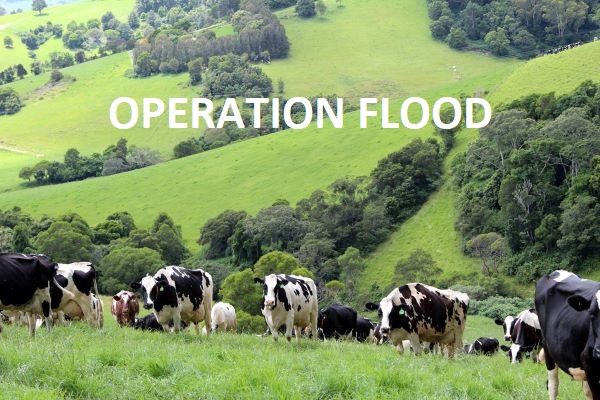Transforming India’s Dairy Supply Chain, Sustaining Rural Livelihoods
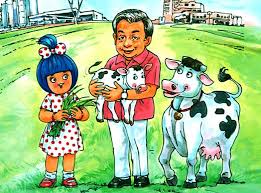
If there is one thing that epitomizes the heart of Rural India apart from agricultural fields, it is Cattle. They have been her bulwark – as both draught and milch stock. It is hard therefore to imagine an India without a vibrant dairy farming sector. How India went from a milk-deficient nation into the largest milk producer on earth is a testament to the vision of several INC prime ministers and the leadership of administrators and scientists, particularly Dr. Verghese Kurien. The brand Amul, the city of Anand and the National Dairy Development Board embody the White Revolution in India.
Background
At the beginning of the 20th century, enterprising farmers in Kaira (now in Gujarat) exploited the railway network to supply Bombay with milk and milk products. Pestonji Edulji Dalal, owner of Bombay-based coffee brand Polson’s, realized that the imperial army, despite captive Military Dairy Farms, had supply challenges. He set up a dairy in Kaira and ensured that Polson’s dominated the business by the 1930s[1].
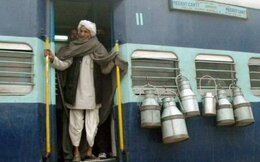
Kaira farmers were disadvantaged – the Polson’s monopoly meant prices were arbitrary and too low, and they had to travel long distances to deliver milk to the dairy. In 1946, Vallabhbhai Patel advised them to create a co-operative and supply milk directly. The Bombay provincial government refused to register the society but relented when the farmers went on strike. The Kaira District Co-operative Milk Producers’ Union was created, headed by Tribhuvandas Patel, with 2 villages involved.
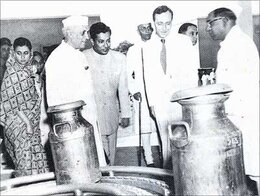
Meanwhile Dr Verghese Kurien graduated from Michigan State University in 1949 and was assigned as dairy engineer at the Anand government creamery. Not particularly enthused by his surroundings or the job, he served out his bond period (he had earned a government scholarship to study abroad) and joined Tribhuvandas Patel to help the Union. Together they created the Anand Milk Union (Amul) and built a modern milk processing unit. Their efforts paid off; inspired by their success, many co-operatives sprang up across the state. Under Dr Kurien’s chairpersonship, the Gujarat Co-operative Milk Marketing Federation helped bring these co-ops together, their produce marketed under the Amul brand.
The Five Year Plans and the Dairy Sector
The very first Five Year Plan established the primacy Nehru’s government gave to Cooperatives as an organizing mechanism through which production and surpluses for re-investment would be generated: “If planning is to avoid excessive centralisation and bureaucratic control… the encouragement of cooperative enterprise must be given the highest priority.”[2]
The nutritional primacy of milk and employment possibilities around it, ensured that the dairy sector was given prominence. The plan included 27 schemes for dairying and milk supply, costing 781 lakh Rupees. The state of Bombay, in which Kaira was then, received 77% of this outlay[3].
Since 1948, the government had been supporting the KDCMPU. This would continue all the way up to 1965 when the focus shifted to replicating the model across India. Over 1948-56, including the first Five Year plan period, KDCMPU received nearly 25 lakh Rupees (at least 25 crore in 2020 INR) as loans or grants.
The Nehru government had executed livestock improvement projects in 600 villages and established 150 artificial insemination centres by 1956. The second Five Year Plan shifted focus to rapid industrialization, but dairy farming continued to receive robust support – 1258 key villages were to be added by 1961. The dairy and animal husbandry sector was sanctioned 56 crore Rupees of investment[4].
Over three years leading up to the first Five Year Plan, and subsequently through three planning periods, governments also gave grants amounting to 1.83 crore Rupees and loaned another 1 crore Rupees[5].
Jawaharlal Nehru opened the world’s first plant to produce dried milk powder from buffalo milk in Gujarat in 1956. This helped Amul deal effectively with seasonal fluctuations in demand[6]. It was H M Dalaya, Kurien’s friend from his university days, who ran Amul’s technical operations. He developed the Niro Atomiser – the first ever sprayer-dryer to dry buffalo milk – in 1955[7].
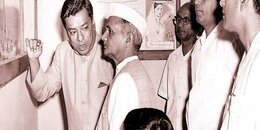
Nehru, in a bid to strengthen the domestic industry, banned the import of condensed milk in 1958, and curtailed butter and baby food imports. His government also had the Central Food Technological Research Institute (CFTRI) develop a process to produce baby food from buffalo milk, which was operationalized by Amul. The latter started making cheese in 1963 and, after two years of experimentation, processed cheese in 1965. The expansion into these segments required investments of around 400,000 USD. A government grant from Nehru met 84% of this expenditure [8].
Lal Bahadur Shastri constituted the National Dairy Development Board in 1965 with Dr Kurien as its head. It was meant to replicate the “Anand pattern” as it came to be called, nation-wide[9].
The Anand Pattern
The autonomy assured to the National Dairy Development Board by Shastri and later, Indira Gandhi, reflected the organizing principles of the GCMMF, which came to be called the Anand Pattern. It is an integrated cooperative framework that procures, processes and markets produce. The producers make collective decisions on policies and operations. Because of economies of scale and cooperation, they can purchase state of the art equipment and technology, market produce effectively, hire professionals and obtain a fair price. Everything up and down the chain is owned by the producers themselves.
The producers form a village Dairy Cooperative Society, with all of them owning shares in it. They deliver milk to the DCS collection centre where their produce is evaluated – the price varies based on quality payments. Annually, some of the DCS’ profits are paid out as a bonus to members, based on total milk delivered by them.
The village societies come together to form a District Cooperative Union. The Union processes and markets milk and derived products. Many Unions also manage member services like feed, veterinary care, artificial insemination, operations management and consulting.
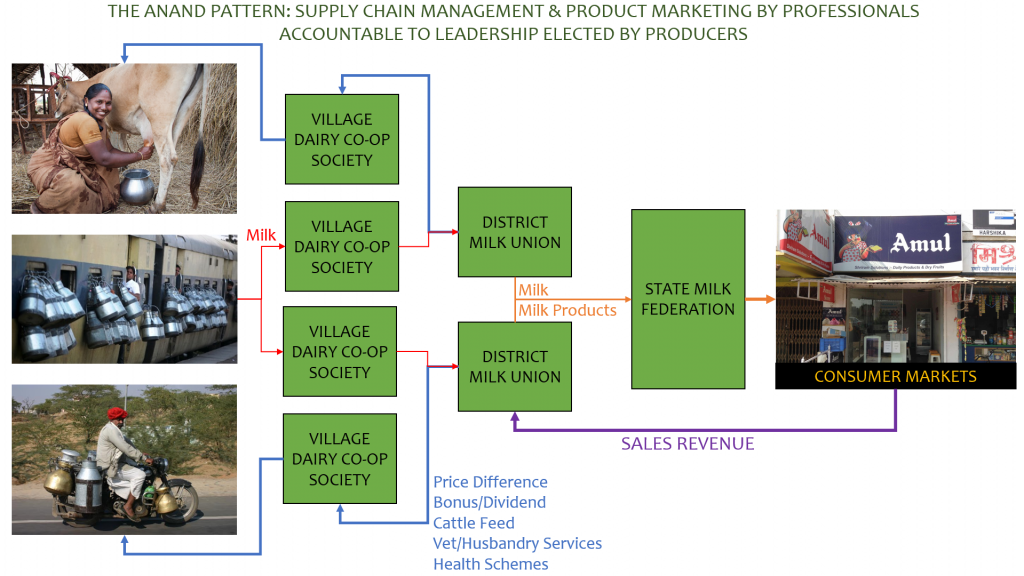
The unions form a State Federation, which market all the products and manage the last mile delivery to points of sale. Some federations also operate feed generation and other support activities[10].
Operation Flood
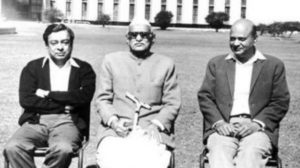
Nehru, Shastri and then Indira Gandhi had all provided the political backing needed to establish the Anand experiment and scale it across Gujarat. Indira Gandhi and Dr. Kurien decided that the NDDB would implement the same model across the country to drive milk-based product volumes up exponentially. Operation Flood was the plan launched in 1970 to do exactly that. The end goal was a National Milk Grid that connected the entire national supply chain from all producers to the consumer.
Mrs. Gandhi’s government arranged for the NDDB to receive skimmed milk powder and butter oil from the European Economic Community (EEC, later absorbed into the European Union) which was seeing a production glut. The NDDB negotiated the donation; the sale of the gifted produce served as the seed money to drive phase 1 of Operation Flood. By 1980, 18 milk producing regions across India had been connected to Bombay, Delhi, Calcutta and Madras.
The next phase linked 136 producing regions to 290 urban markets over five years. Endorsed and supported by Rajiv Gandhi, the scale achieved was staggering: 43000 village cooperatives and 4.25 million milk producers sent production soaring from 22000 tons in 1970 to 140000 tons by 1989.
Between 1985 and 1996, Operation Flood focused on large scale procurement and marketing infrastructure development. It also extended veterinary, feed, artificial insemination and education services. Simultaneously 30000 dairy cooperatives were added, and the producing regions grew to 173 in 1988-89. A notable achievement was the significant increase in women members and Women’s Cooperative Societies[11].
The Rajiv Gandhi government also accorded the NDDB the constitutional status of an institution of national importance in 1987. The NDDB Act merged the Indian Dairy Corporation with the NDDF and created a financial and administrative structure giving the latter operational autonomy, while receiving assistance from the Government of India and appropriate foreign entities[12].
In 1998, India achieved a significant milestone: the country overtook the USA as the largest milk producer on the planet, accounting for 15% of the world’s production[13].
Mission Milk – The Next Big Leap
Towards the end of Dr. Manmohan Singh’s first Prime Ministerial term, rapid economic growth indicated that India need milk supply to grow at an annualized 4% rate over the foreseeable future. The UPA government tasked NDDB with creating the National Dairy Plan – a successor to Operation Flood a decade after the latter had achieved its objectives. Over the next year, the NDDB defined the objectives and contours of what was called Mission Milk.
The goal was to double milk production in fifteen years. The NDDB determined that this could be achieved by increasing productivity of milch animals and providing rural producers greater access to the organised milk-processing sector. The initiatives are centred around
- Scientific Breeding and Nutrition
- Computerised Information Systems
- Strengthening Village based Milk Procurement Centres
- Strong Project Management and Capacity Building
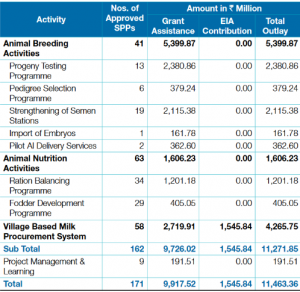
The plan was formulated in 2007-08 with the Planning Commission approving aggregate investment of 17300 crore INR in December 2008[14]. The World Bank agreed to fund the first phase, and by March 2014, 171 sub-projects covering 15 states were approved with a total outlay of 11463.36 million INR. Work had already commenced on some projects and 1082.80 million INR utilized. India continued to be the largest milk producer in the world, with 137.7 million tonnes produced. The estimated per capita availability of milk increased to 302 grams per day which is more than the world average of 294 grams per day[15].
The dairy sector is a shining illustration of the quintessentially Indian mix of socialist principles and private enterprise at its best. The importance of milk production and processed products to the economy of India and the well-being of all Indians – both producers and consumers – cannot be overstated. Just the financial muscle milk adds to India’s growth and rural livelihoods, compared to crops, gives us a perspective –
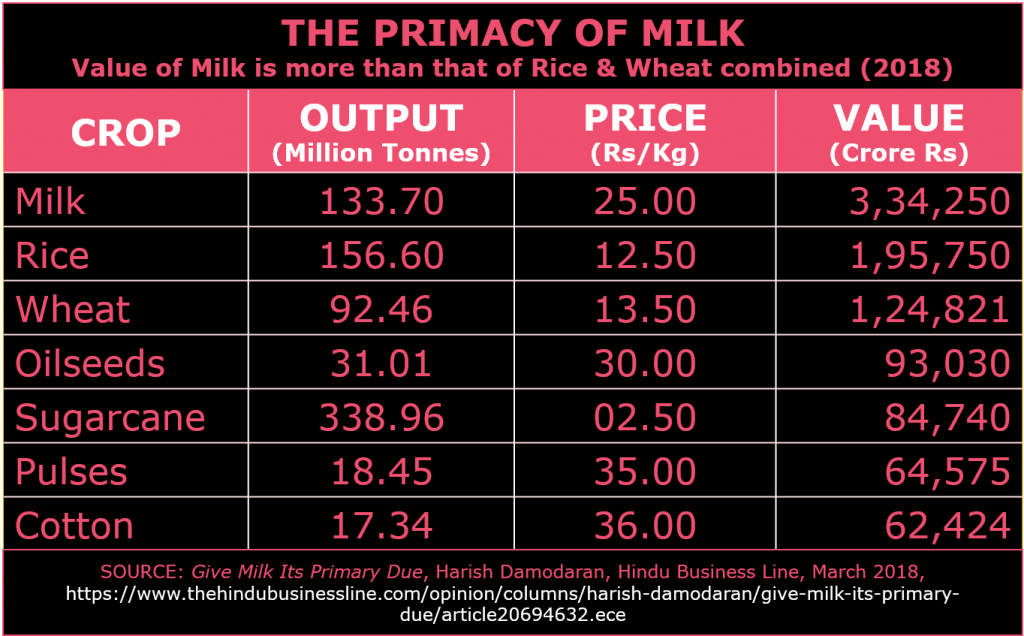
Conclusion
The dairy sector in India evolved considerably from pre-Independence to the 21st century under various INC governments. Every INC prime minister recognized the impact the sector could have on rural livelihoods and the health of all citizens, and offered unstinting support to Milk Co-operative Unions and the National Dairy Development Board in the transition from milk production deficiency to becoming the largest milk producing nation in the world.
REFERENCES
[1] The Story of Polson Butter, Jul 2007, Parsi Khabar [Permanent Link]
[2] Objectives, Techniques, Priorities in Planning, 1st Five Year Plan, NITI Ayog [Permanent Link]
[3] Dairying and Horticulture, First Five Year Plan, Jul 1951, Government of India
[4] Animal Husbandry and Dairying, Second Five Year Plan, May 1956, Government of India
[5] Amul: An Experiment in Rural Development, 1981 (MacMillan), SP Singh & PL Kelley
[6] Verghese Kurien: Obituary, Oct 2012, The Telegraph UK [Permanent Link]
[7] Amul’s Tech Wizard Passes Away, Sep 2004, The Hindu Business Line
[8] Embeddedness & the Dynamics of Growth, May 2013, Abhijit Ghosh, UNRISD Conference Paper
[9] India’s Milk Revolution, 2004, World Bank Case Study authored by Dr Verghese Kurien
[10] The Anand Pattern, National Dairy Development Board website [Permanent Link]
[11] Operation Flood, National Dairy Development Board website [Permanent Link]
[12] NDDB Constitution, National Dairy Development Board website [Permanent Link]
[13] The Indian Dairy Sector, 2013, American Dairy Products Institute website [Permanent Link]
[14] NDDB Annual Report 2010-11, National Dairy Development Board website [Permanent Link]
[15] NDDB Annual Report 2013-14, National Dairy Development Board website [Permanent Link]
Disclaimer :The opinions expressed within this article are the personal opinions of the author. AlignIndia does not take any responsibility for the content of the article.
(Santhosh D’Souza combines professional interest in technology with a passion for science, history, mythology and current affairs. He tweets @santhoshd)


